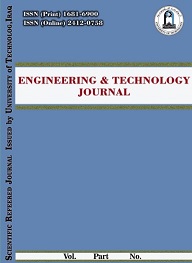Abstract
Fully bainitic microstructure can be obtained by isothermal transformation at
temperatures within the range of bainite transformation. Both transformation temperature
and time determine the phase fraction, the scale of the resultant microstructure and the
carbone content of the retained austenite, which in turn determine the mechanical
properties.
In this study, the thermomechanical simulator was used to obtained the fully bainitic
microstructure for the high carbon alloy steel (0.78%C) at a different bainite
transformation temperatures (200 to 350°C) in order to study the effect of the isothermal
transformation temperature on the resultant mechanical properties.
It has been concluded from the detailed analysis of the microstructure, the dilatometric
data and the mechanical properties (hardness and tensile properties) that finer bainite and
less retained austenite phase fraction can be obtained by transformation at lower
temperatures, and that leads to exceptional mechanical properties (Hardness ≈ 660 HV,
and Tensile strength ≈ 2 Gpa).
temperatures within the range of bainite transformation. Both transformation temperature
and time determine the phase fraction, the scale of the resultant microstructure and the
carbone content of the retained austenite, which in turn determine the mechanical
properties.
In this study, the thermomechanical simulator was used to obtained the fully bainitic
microstructure for the high carbon alloy steel (0.78%C) at a different bainite
transformation temperatures (200 to 350°C) in order to study the effect of the isothermal
transformation temperature on the resultant mechanical properties.
It has been concluded from the detailed analysis of the microstructure, the dilatometric
data and the mechanical properties (hardness and tensile properties) that finer bainite and
less retained austenite phase fraction can be obtained by transformation at lower
temperatures, and that leads to exceptional mechanical properties (Hardness ≈ 660 HV,
and Tensile strength ≈ 2 Gpa).
